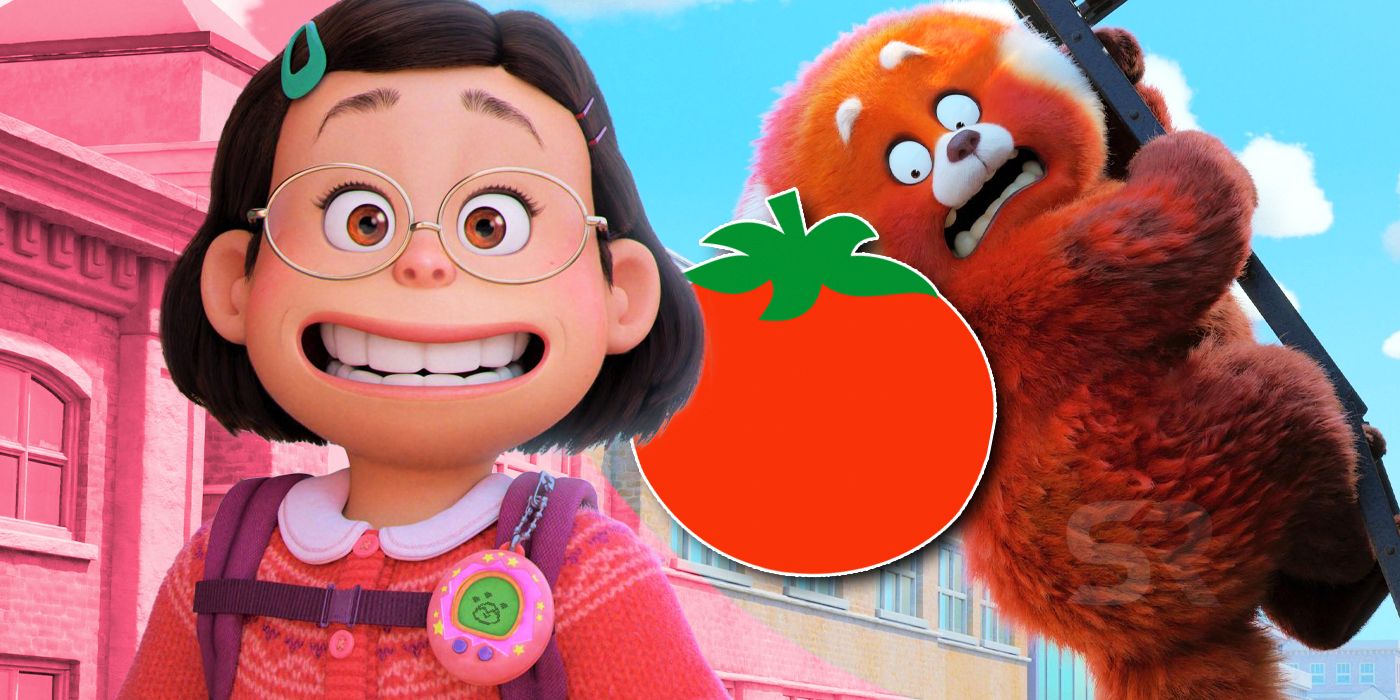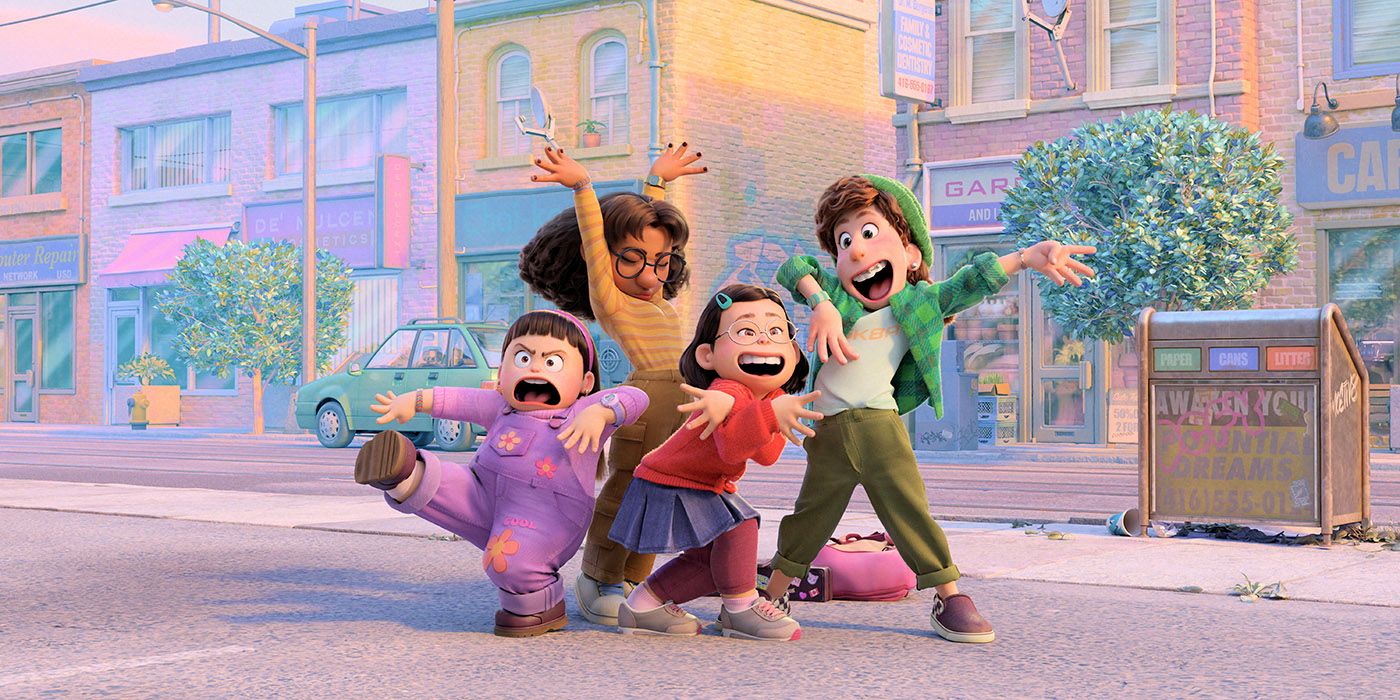Turning Red is Pixar’s latest movie, and unsurprisingly, it’s already getting positive reviews from critics. Pixar continues to be a powerhouse in the world of animation and keeps on treating the audience to at least one movie per year, each one with a different setting exploring a different culture or world, but all with the studio’s signature moral lesson at the end and with a good dose of humor. In 2022, Pixar will bring two very different movies for the audience to enjoy, and the first one is Turning Red.
Directed by Domee Shi, Turning Red takes viewers to Canada to meet Meilin "Mei" Lee (Rosalie Chiang), a 13-year-old Chinese-Canadian student who one day discovers that whenever she gets too excited or stressed, she turns into a giant red panda, but she can turn back if she becomes calm. This “condition” turns out to be linked to her ancestors, who have a shared history with the species as a family curse, but the curse can be contained by performing a special ritual on one specific night… which to Mei’s luck, coincides with a concert of her favorite boy band. All of this, of course, as she deals with everything puberty throws her way.
Turning Red was originally planned to be released in theaters, but as the coronavirus pandemic evolved and the Omicron variant appeared, Pixar and Disney changed their plans and Turning Red was sent directly to Disney+ (though it will be released in theaters in countries where Disney+ isn’t available). At the time of writing, Turning Red holds a 94% score on Rotten Tomatoes, with critics praising the story, animation, Shi’s direction, and its approach to a different culture. Here’s what the positive reviews of Turning Red are saying:
“The best thing about “Turning Red” is how it broadens the horizons of the 36-year-old animation powerhouse with a refreshing vantage point and some new moves. If some of Pixar’s greatest movies have used high concepts to illustrate existential quandaries, “Turning Red” (which like the previous two Pixar releases is streaming only; it debuts Friday on Disney+) is one of the studio’s most specifically drawn films.”
“For decades, Disney sold little girls polished princess fantasies to sell toys. But in that, they also sold an idea of girlhood that was woefully limiting. Here, the fantasy has an element of body horror but is treated with a jocular touch that makes Turning Red an absolute blast. In giving us a protagonist who is confident, kooky, but also a mess, Disney and Pixar gave kids a role model who rejects convention and is better for it — and better for us.”
“Shi has transformed the studio's typical visual sensibility to incorporate the influence of 2D anime, where the facial expressions of characters are pushed to the extreme, and backdrops can change entirely alongside a character's emotions. Pixar's creative team have never been silent about their love for anime (the studio's last film, "Luca", was set in a fictional town named after Hayao Miyazaki's "Porco Rosso"), but the genre's visual sensibility has seldom influenced the look of one of their movies quite like this. [...] It's more of a hyper-kinetic feast for the senses than we've come to expect from Pixar, and more than any of their movies in recent years, immediately invites repeat viewings just to pore over every single detail.”
“The Ludwig Göransson score thrums and flutters like only a Ludwig score can. And the distinct visual style — incorporating anime speed-lines, face-filter emoji reactions, and a defiantly tween-girl pastel-pink sparkly sheen — means it looks unlike anything the studio has done before. Turning Red not only keeps Mei’s experiences and emotions at the heart of the story; the entire film feels like it’s filtered through her personality: ebullient and energetic and irresistible.”
CBR:
“Turning Red is a film that takes what appears to be a familiar tale of culture clash under the backdrop of a coming-of-age story of self-discovery and breathes new life into it. With literal magic, Turning Red leans into the creative possibilities that come with the story's time period and themes. The red panda element to the story gives Turning Red its core premise but it's the cast's naturally buoyant energy that makes the film stand a cut above the rest.”
Turning Red follows the trademark computer-animated style of Pixar movies, but its anime influences are what are making it stand out from the rest, and they also gave the creative team more freedom to better express Mei’s emotions and struggles through her more exaggerated facial expressions and even the colorful backgrounds. Although these details have been pointed out as some of the biggest strengths of the movie, along with the story itself and how it addresses puberty, its use of culture, and Ludwig Göransson’s score, there are some critics that aren’t fully on board with what Turning Red has to offer, with some finding that it continues some of Pixar’s worst recent trends and doesn’t bring anything new. Here’s what some of the negative reviews and opinions of Turning Red are saying:
“The animation style is an unthinking hodgepodge of comic book affectation and broadly “Asian” nods, its aesthetic design primarily cribbing from anime, but throwing in some Kaiju iconography for good measure. The skill still impresses, even as its conception is haphazard at best and borderline offensive at worst, but ultimately not much worth lineating given how derivative it all is. [...] Turning Red is not only a disappointment in its own right, though, but is as blunt an expression of post-2009 Pixar’s worst tendencies as we’ve yet seen: uninspired, insipid, and increasingly reliant on winking referentialism to compensate for lacking originality.”
“It’s also, perhaps, a self-aware demotion for another under-par film, one that’s not without merits and the occasional biggish swing, but a far far cry from the partnership’s wildly inventive heyday. What once felt organic has come to feel far too over-calculated from the wacky but-wait-what-if set-up to the but-wait-it’s-actually-really-about allegory and coming out less than a year after Luca, which had a similar transformation narrative, Turning Red feels like factory line Pixar.”
Pixar has a well-established formula that even though it’s repetitive, most movies manage to give it a fresh twist thanks to their stories and characters, but it’s still going to be a talked-about point about Pixar’s movies. Turning Red is no exception, and it’s not surprising that it has been mostly well-received but it has also been divisive, as it’s a new visual style for the studio and addresses more serious and at times complex themes that some viewers might not want to watch in a Pixar movie, but are ultimately necessary for the studio to be more inclusive and diverse and ensure that viewers have at least one movie or character they can relate to.


